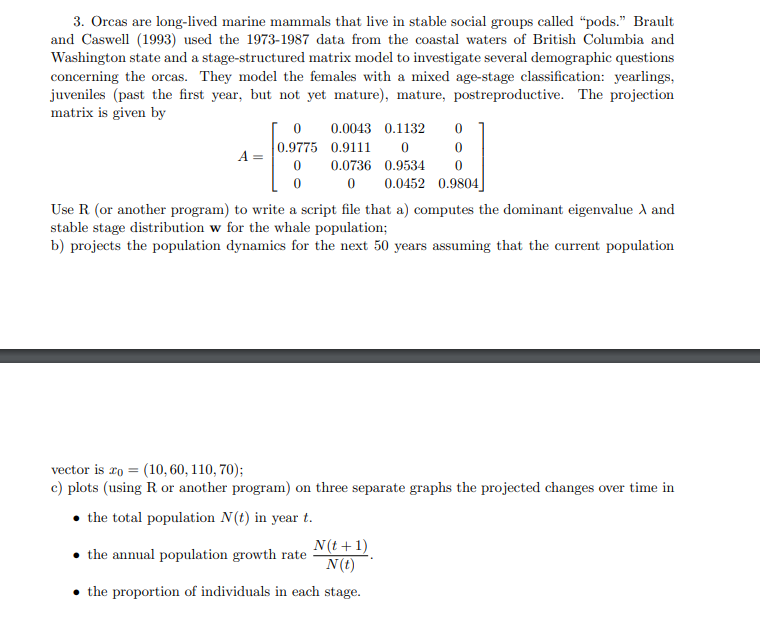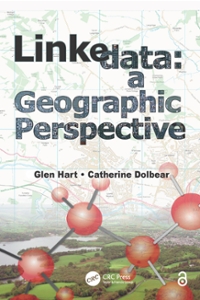
3. Orcas are long-lived marine mammals that live in stable social groups called "pods." Brault and Caswell (1993) used the 1973-1987 data from the coastal waters of British Columbia and Washington state and a stage-structured matrix model to investigate several demographic questions concerning the orcas. They model the females with a mixed age-stage classification: yearlings, juveniles (past the first year, but not yet mature), mature, postreproductive. The projection matrix is given by 0 0.0043 0.1132 0 0.9775 0.9111 0 0 A 0 0.0736 0.9534 0 0 0.0452 0.9804 Use R (or another program) to write a script file that a) computes the dominant eigenvalue and stable stage distribution w for the whale population; b) projects the population dynamics for the next 50 years assuming that the current population 0 vector is 20 = (10,60, 110, 70); c) plots (using R or another program) on three separate graphs the projected changes over time in the total population N(t) in year t. the annual population growth rate N(t +1) N() the proportion of individuals in each stage. 3. Orcas are long-lived marine mammals that live in stable social groups called "pods." Brault and Caswell (1993) used the 1973-1987 data from the coastal waters of British Columbia and Washington state and a stage-structured matrix model to investigate several demographic questions concerning the orcas. They model the females with a mixed age-stage classification: yearlings, juveniles (past the first year, but not yet mature), mature, postreproductive. The projection matrix is given by 0 0.0043 0.1132 0 0.9775 0.9111 0 0 A 0 0.0736 0.9534 0 0 0.0452 0.9804 Use R (or another program) to write a script file that a) computes the dominant eigenvalue and stable stage distribution w for the whale population; b) projects the population dynamics for the next 50 years assuming that the current population 0 vector is 20 = (10,60, 110, 70); c) plots (using R or another program) on three separate graphs the projected changes over time in the total population N(t) in year t. the annual population growth rate N(t +1) N() the proportion of individuals in each stage







